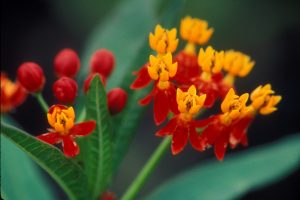#POLLINATORWEEK: Milkweed for Monarchs
This is Passport to Texas
More than seventy species of milkweed have been recorded nationwide; over half of those are native to Texas. Including two that are endemic.
These are species that are found nowhere else but within the Texas border. One of them is called Texas Milkweed, which is found in canyons in Central Texas. And then we have a species called Coastal Milkweed that occurs roughly from the Houston area to just north of Brownsville.
Jason Singhurst, a botanist with Texas Parks and Wildlife, says milkweeds provide sustenance to the a delightful pollinator—the iconic monarch butterfly—during its migration.
So, here in Texas, we know certain species like green milkweed, antelope horns, broadleaf milkweed, and zizotes are some of our most abundant species that we’re seeing monarch larvae and adults visit.
Because milkweed species vary, do monarchs use each species in the same or different ways?
That’s a really good question. That’s something we’re trying to figure out in Texas. And that’s why we started this mapping project called Texas Milkweeds and Monarchs project—using iNaturalist. It’s an app that you can download on your smartphone. We’re using that project to help us identify different species of milkweeds across the state, and then also which species that larvae, or adult monarch butterflies are visiting.
Find a link to the Milkweeds and Monarchs project on iNaturalist at passporttotexas.org.
The Wildlife Restoration program supports our series.
For Texas Parks and Wildlife…I’m Cecilia Nasti.



 Passport to Texas is a
Passport to Texas is a  Passport to Texas is made available by:
Passport to Texas is made available by: